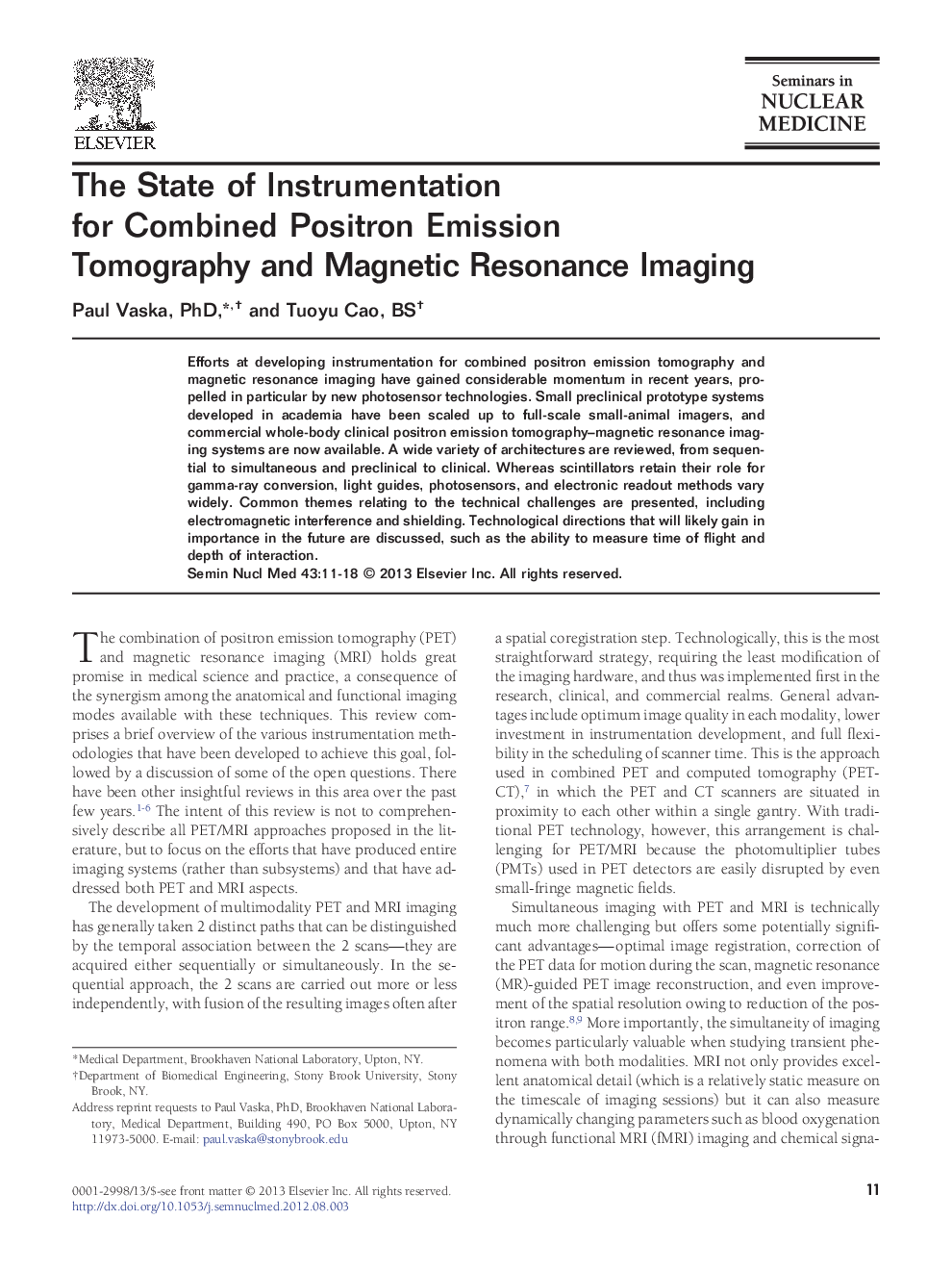| Article ID | Journal | Published Year | Pages | File Type |
|---|---|---|---|---|
| 4251208 | Seminars in Nuclear Medicine | 2013 | 8 Pages |
Efforts at developing instrumentation for combined positron emission tomography and magnetic resonance imaging have gained considerable momentum in recent years, propelled in particular by new photosensor technologies. Small preclinical prototype systems developed in academia have been scaled up to full-scale small-animal imagers, and commercial whole-body clinical positron emission tomography–magnetic resonance imaging systems are now available. A wide variety of architectures are reviewed, from sequential to simultaneous and preclinical to clinical. Whereas scintillators retain their role for gamma-ray conversion, light guides, photosensors, and electronic readout methods vary widely. Common themes relating to the technical challenges are presented, including electromagnetic interference and shielding. Technological directions that will likely gain in importance in the future are discussed, such as the ability to measure time of flight and depth of interaction.
